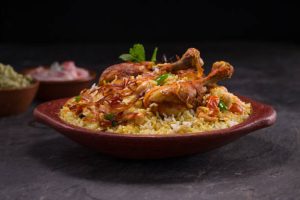In recent years, Central Asian cuisine has captured the hearts and palates of food lovers worldwide. Known for its bold flavors, vibrant spices, and hearty dishes, the food of this region—spanning countries like Uzbekistan, Kazakhstan, Tajikistan, and Afghanistan—offers a unique blend of tastes influenced by centuries of cultural exchanges. As people become more adventurous with their culinary experiences, the global appetite for Central Asian cuisine has grown exponentially.
Let’s explore the factors that have propelled this cuisine into the global spotlight and why it’s quickly becoming a favorite in the international food scene.
A Fusion of Cultures and Flavors
Central Asia has long been a crossroads of civilizations, with influences from the Middle East, South Asia, and even Eastern Europe shaping its culinary identity. This blend of cultures has resulted in dishes that are rich in flavor and complexity. Staples like plov (rice pilaf), manti (steamed dumplings), and shashlik (grilled skewers) reflect this diverse heritage.
The use of aromatic spices like cumin, coriander, and turmeric adds depth, while techniques like slow cooking and grilling ensure that every bite is infused with flavor. This fusion of traditions makes Central Asian cuisine a unique culinary experience that resonates with food lovers from different cultural backgrounds.
Hearty and Comforting Dishes
At its core, Central Asian cuisine is all about comfort. Dishes are designed to nourish and satisfy, making them perfect for people who seek hearty, home-style meals. Whether it’s a steaming bowl of lagman (hand-pulled noodle soup) or a flaky Samsa (savory pastry), the cuisine offers a sense of warmth and familiarity.
In an era where people are increasingly drawn to foods that provide both comfort and flavor, Central Asian dishes strike the perfect balance. They are filling, flavorful, and rich in history, making them ideal for both casual dining and special occasions.
Focus on Fresh Ingredients
One of the hallmarks of Central Asian cuisine is its reliance on fresh, high-quality ingredients. Vegetables, meats, and herbs are sourced locally and used at the peak of their freshness. This commitment to quality ensures that dishes not only taste delicious but are also wholesome and nutritious.
For example, salads like achik-chuchuk (tomato and onion salad) and sides like roasted eggplant or yogurt dips highlight the natural flavors of the ingredients. This emphasis on freshness aligns perfectly with global trends toward farm-to-table dining and health-conscious eating.
Vegetarian and Vegan Options
While Central Asian cuisine is often associated with meat-heavy dishes, it also offers a wealth of vegetarian and vegan-friendly options. Dishes like lentil stews, grilled vegetables, and spiced rice cater to plant-based diets without compromising on flavor.
As more people adopt vegetarian or vegan lifestyles, the versatility of Central Asian cooking allows it to appeal to a broader audience. This inclusivity has contributed to its growing popularity, particularly in urban centers with diverse dietary preferences.
Spices That Tell a Story
Spices are at the heart of Central Asian cooking, each carrying its own story of trade, migration, and cultural exchange. Ingredients like saffron, cumin, and dried chilies have traveled along the Silk Road, infusing dishes with bold and distinctive flavors.
These spices enhance the taste of dishes and offer health benefits, such as improved digestion and reduced inflammation. The exotic allure of these spices appeals to modern diners seeking both flavor and wellness in their meals.
Street Food Appeal
Central Asian street food has also played a significant role in its global popularity. From sizzling skewers of shashlik to freshly baked naan, the cuisine’s street food offerings are accessible, flavorful, and perfect for on-the-go dining.
As food trucks and street food festivals gain traction worldwide, Central Asian dishes are making their way into these events, introducing more people to their irresistible flavors. The casual, communal nature of these foods resonates with people looking for authentic and approachable culinary experiences.
Cultural Curiosity and the Silk Road Connection
The mystique of the Silk Road, an ancient trade route that connected East and West, has reignited global interest in the cultures it touched. Central Asia, with its rich history as a hub of trade and cultural exchange, is a focal point of this renewed fascination.
Diners are not just eating the food—they’re exploring the stories behind it. The historical and cultural significance of dishes like plov or manti adds an extra layer of appeal, making each meal a journey into the past.
Adaptability to Modern Palates
While Central Asian cuisine remains deeply rooted in tradition, it has also proven to be highly adaptable to modern tastes. Chefs worldwide are experimenting with these flavors, incorporating them into contemporary dishes and fusions.
For example, naan is used as a base for gourmet pizzas, while grilled kebabs find their way into wraps and sandwiches. This ability to evolve while maintaining authenticity ensures that Central Asian cuisine continues to attract new fans.
A Growing Presence in Global Restaurants
The rise of Central Asian restaurants and food outlets in major cities has made the cuisine more accessible than ever. Food enthusiasts can now sample authentic dishes without traveling to the region, broadening its reach and appeal.
Food influencers and bloggers have also played a significant role in introducing Central Asian cuisine to a global audience. Through social media platforms, visually stunning dishes like golden plov and colorful manti are inspiring food lovers to seek out these unique flavors.
Conclusion
The global popularity of Central Asian cuisine is no accident. Its rich flavors, cultural depth, and adaptability to modern tastes have positioned it as a rising star in the culinary world. As people continue to seek authentic and diverse dining experiences, this cuisine offers a perfect blend of tradition and innovation.
Whether you’re enjoying a plate of plov, savoring a skewer of shashlik, or sipping on a cup of spiced tea, Central Asian food invites you to experience the warmth, history, and flavors of a region that has captivated the world.








